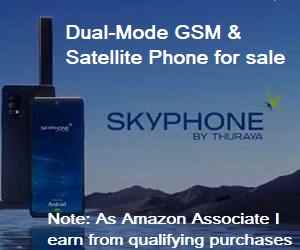Satellite Internet Forum.
Welcome, Guest. Forum rules.To search this site click here > SATSIG search
| Home Login Register |
| Satellite Internet forum › LinkStar Forum: VSAT hubs and terminals › Aquiring W6 from Iraq - problem with LinkStar |
|
Pages: 1
|
Aquiring W6 from Iraq - problem with LinkStar(Read 6740 times) |
|
Nenad
Member
★★ Offline Posts: 4 |
Jan 21st, 2010 at 5:55am
|
| Back to top |
« Last Edit: Feb 10th, 2010 at 6:30am by Admin1 »
IP Logged
|
|
Admin1
YaBB Admin
★★★★★ Offline Posts: 1252 |
Reply #1 - Jan 21st, 2010 at 8:36am
|
| Back to top |
« Last Edit: Jan 26th, 2010 at 5:19pm by Admin1 »
IP Logged
|
|
FeedElAzim
Member
★★ Offline Posts: 6 |
Reply #2 - Jan 26th, 2010 at 12:22pm
|
| Back to top |
Turn me left,right, up or down. You still won't feed my horn.
IP Logged
|
|
Admin1
YaBB Admin
★★★★★ Offline Posts: 1252 |
Reply #3 - Jan 26th, 2010 at 5:25pm
|
| Back to top |
IP Logged
|
|
Nenad
Member
★★ Offline Posts: 4 |
Reply #4 - Jan 30th, 2010 at 10:26am
|
| Back to top |
IP Logged
|
|
Nenad
Member
★★ Offline Posts: 4 |
Reply #5 - Jan 30th, 2010 at 10:32am
|
| Back to top |
IP Logged
|
|
Eric Johnston
Senior Member
★★★ Offline Posts: 2109 |
Reply #6 - Jan 30th, 2010 at 11:24am
|
| Back to top |
IP Logged
|
|
Nenad
Member
★★ Offline Posts: 4 |
Reply #7 - Feb 10th, 2010 at 4:47am
|
| Back to top |
« Last Edit: Feb 10th, 2010 at 6:29am by Admin1 »
IP Logged
|
|
Eric Johnston
Senior Member
★★★ Offline Posts: 2109 |
Reply #8 - Feb 10th, 2010 at 6:18am
|
| Back to top |
IP Logged
|
|
Pages: 1
|
Email me: eric@satsig.net
Powered by YaBB 2.5.2!
YaBB Forum Software © 2000-. All Rights Reserved.
Disclaimer, Terms of Use and Privacy Forum User Agreement Forum rules Cookie policy.



 and i really appreciate your help.
and i really appreciate your help. , and again thanks to you all and specially Eric, thanks again..
, and again thanks to you all and specially Eric, thanks again..